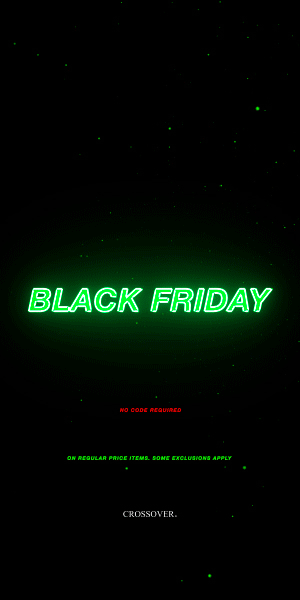Unique very much describes Shantell Martin’s character. Having only worked almost exclusively with black and white, Shantell talks to us about the concept of her art, her reasoning behind her colour palette, her views on the ever evolving art scene, and her current collaboration with PUMA.
Nabil: Seeing as most of your produced work is comprised of a very monotone palette as well as taking a very minimalistic approach to it what do you find in pursuing this very specific style and does this translate your vision well?
Shantell Martin: As you mentioned, I do work a lot with black and white. I do this for many reasons. With black and white, it is very calming to me, and also you can’t hide from it, so for example you have to be very good in it for it to work because within black and white you can see mistakes or you can see your confidence, you can see if you hesitate, so I love the idea that with a monochromatic palette, you get to really push your craft and show a sense of mastery then at the same time you create a landscape which is very calming.
N: Do you have any favourite colour besides black and white?
SM:. It changes all the time right now maybe its red or orange I’m not sure.
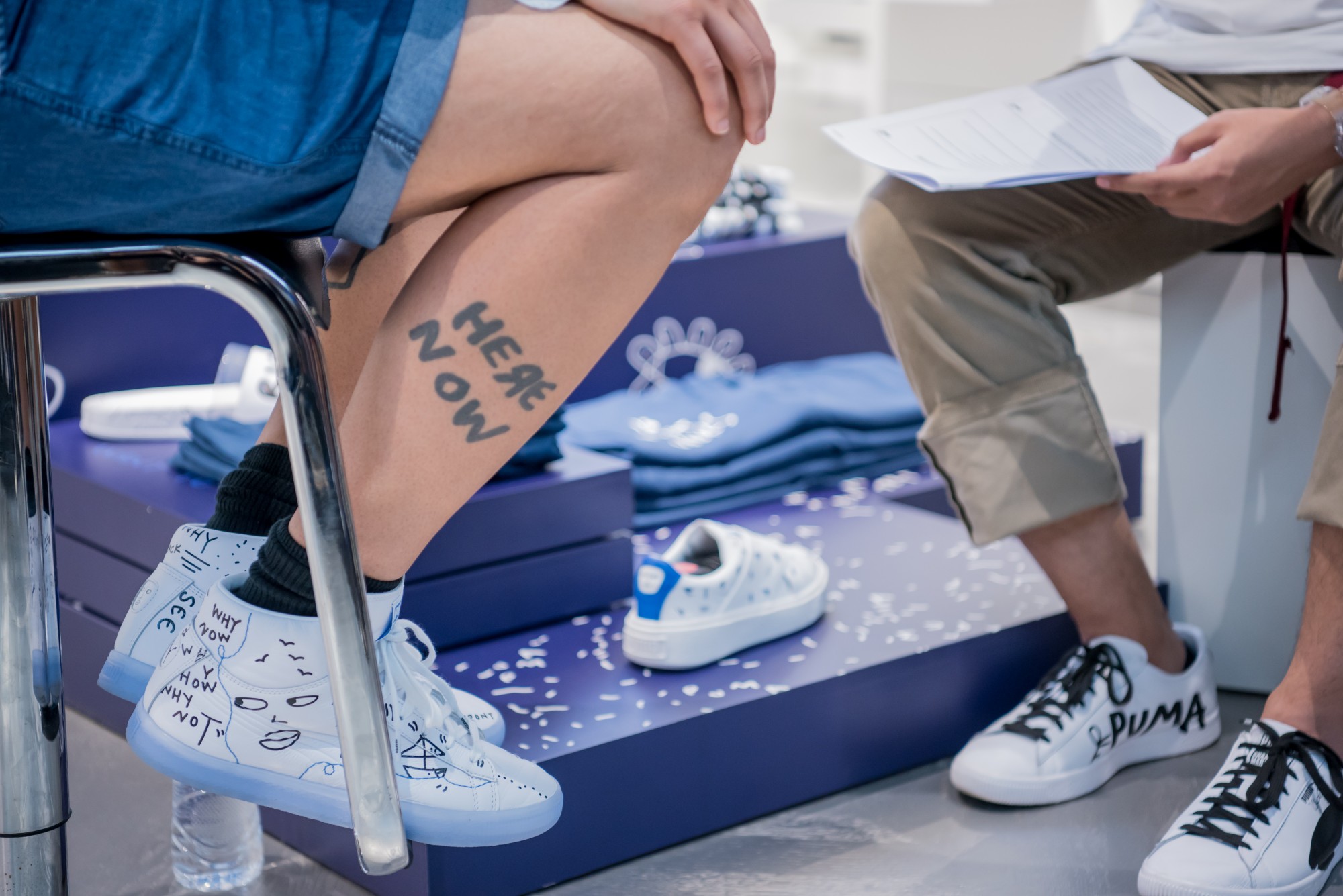
N: Tell us a little bit on how you translate your art into the collection.
SM: So the collaboration with PUMA is an extensive collab; we have shoes, we have apparel, we have accessories, and what is nice about this is you’re combining fashion, you’re combining something thats wearable with art. So for example you have the classic Clyde now, but theres so many layers and details in there. You have the sole, the tips of the laces, you have the left and right under the sole, you have the inserts. Theres all these nice layers of details, so you get to create a pair of shoes but it’s also an art. So I think it’s something really special when I can take my message as an artist and you wear it around.
N: How do you balance commercialisation and artistic value in your pieces?
SM: So its interesting you know with art, there’s these two sides, you know. There’s apparently a commercial world and there’s a fine art world and so I guess I’m one of a few artists that do a lot in both spaces. You can find my work in museums and galleries, you also find it in PUMA or Tiffany and Co. In these other places for me, it’s more about doing projects that I really enjoy in which lately fit the message. I think I didn’t create the boxes for commercial fine art so I’m only going to do what I enjoy and it doesn’t matter wherever that fits.
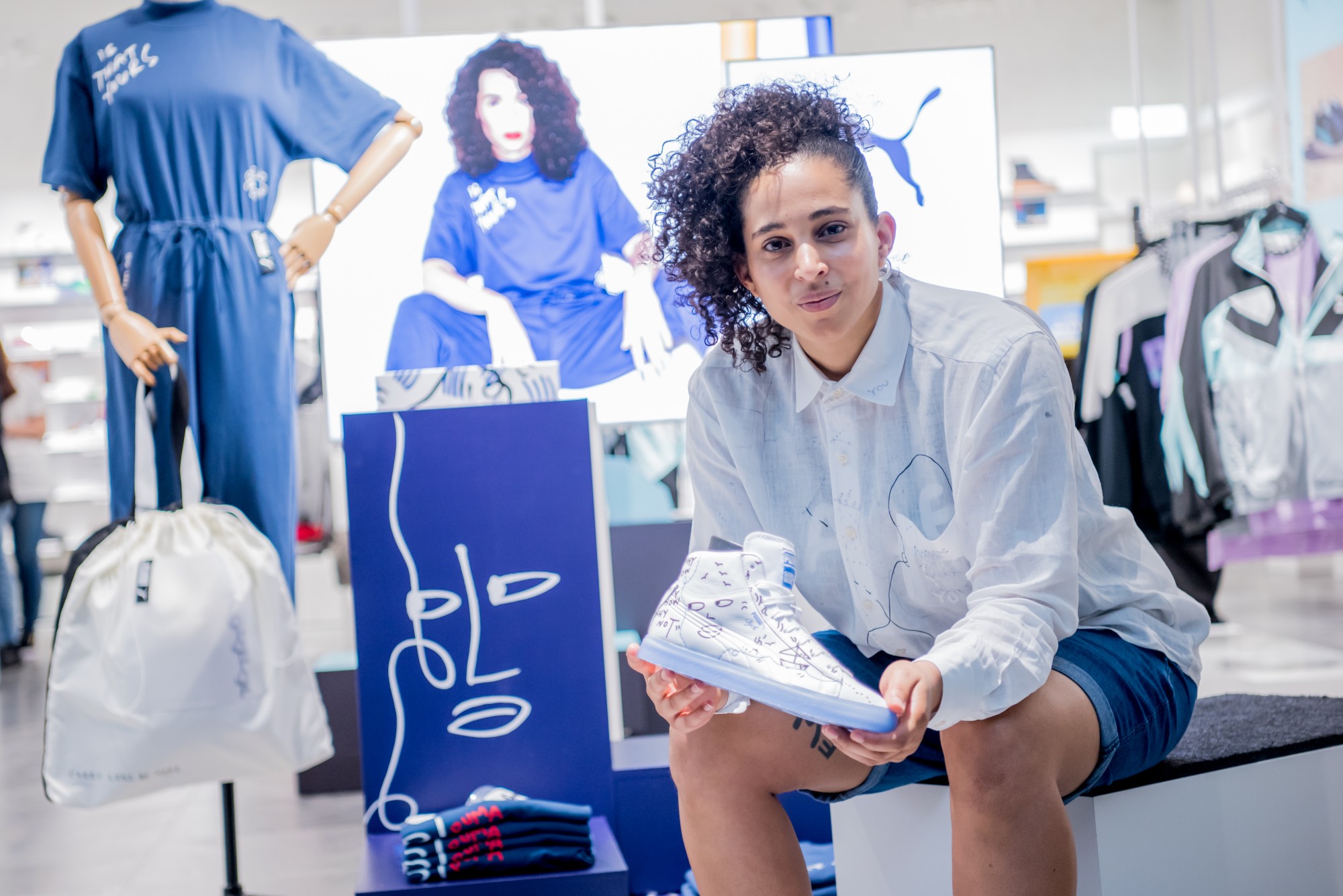
N: What matters to you, the final product or the process of creating said product?
SM: So for me the process of my work is a big part of the work you know sometimes people think the process isn’t the work, its about the final product but I’m the other way around so most of my work is actually create with an audience because I think its important that they see that process you know? Sometimes you have the artist hide in their studio and create the work then the work appears in a frame in a gallery. For me there’s a distance between the viewer and the audience and the artist when you do that but when you expose the process and you share the process, you don’t use magic but you open up to people into your world and I think people are more connected and there’s more of an experience when you do that so for me process is more important
N: We heard that you studied liveophography right in Japan, so do you listen to music when you create something of this particular this PUMA collaboration?
SM: So when I’m working I always listen to music and now recently I started to have friends curate a playlist for me so so that can inspire me when I work and so its really important that you listen to music cause if I’m not listening to music I’m drawing to the same music in my head. That’s the same music that’s in my playlist and when you listen to music, when you draw, when you working on a collaboration like this it gives you a different spring board, it gives you a different energy it gives you a different rhythm and that’s important.
N: So talking about the millennials and art especially in Asia now, we are very artsy, very visual oriented when it comes to social media exposure, taking ootd pictures, what do you think about that ? Is this art or is this a trend?
SM: It’s just how we connect. It’s just how we share, how we experience. It’s just the future we are living in, and thats what that is now and its happening everywhere. I think there’s pros and there’s cons you know, the positives to that is when I was younger I didn’t know anyone that did what I did, so I had to grow up and then I realised that there are other artist in the world that draw and then now you know cause you go on social media and you can find other artists. You can find anyone in the world, and I think the pros are that we are more connected. We can be more inspired by people who are outside where you live. The negative things are maybe we become more internal than external, maybe we are not connected as much as we should with people around us and maybe we aren’t paying attention to what’s going on around us and that can be a negative thing.
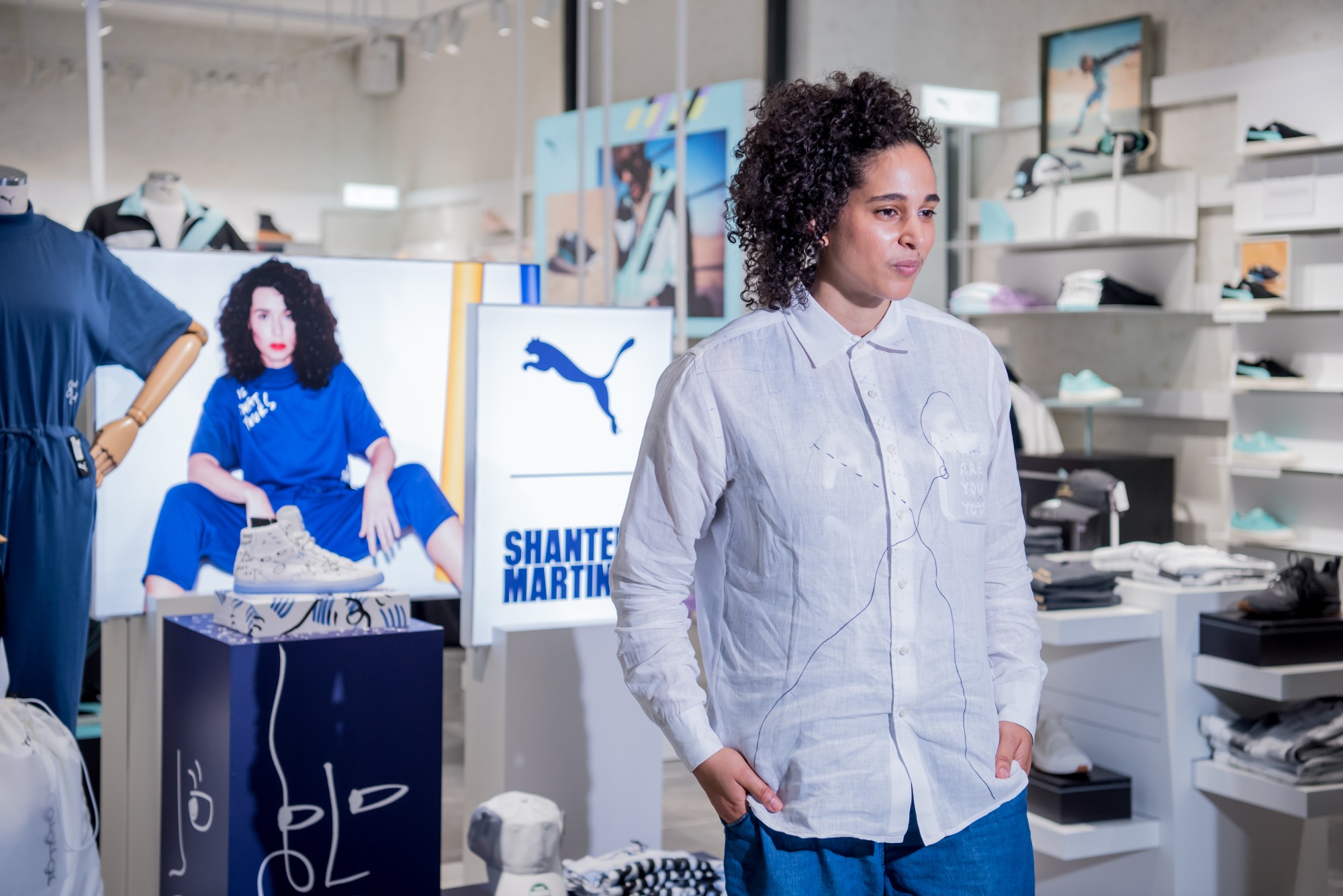
N: In your opinion, does the art that one produces reflect the state of society in general such as art produced during political trying times could be vastly different from the ones produced during a prosperous period?
SM: So artists have different agendas, different political times or different types of climate within any countries and culture you’re going to see the artists that make the type of work reflects the culture you’re going to see that within their art. You’re going to see that within their work, you’re going to see that within their words. The work that I create is more kinda about a bigger picture in general about identity and find yourself, and about this idea of freedom. It’s very playful in a way. So to answer your question, yes. It just depends which type of artist you are and the type of genre the artist has.
N: Actually how did you manage to land this collaboration with PUMA?
SM: So, I think we just got connected and then we were just talking a long time. Someone, I forgot who, connected us first and then it was back and forth through emails. 2016, he signed off on it and so it was almost two years ago we decided to do this as I found out that sneakers actually take a long time to make!
N: How would you describe your PUMA collaborations in three words?
SM: Fun, open and creative!
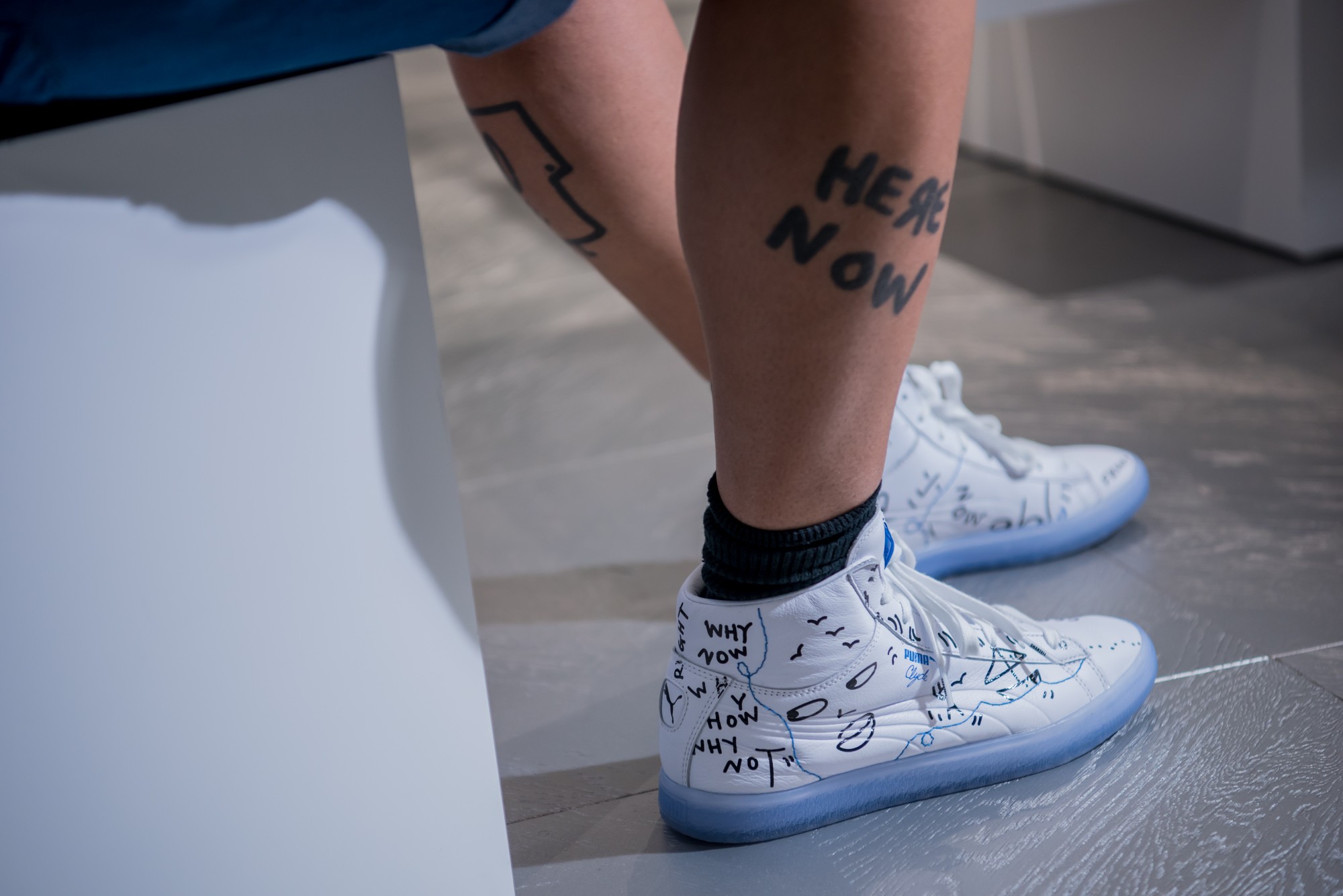
N: Is there any advice for youngsters in Asia that are inspired by your work who want to take their art to the next level?
SM: I guess so, not only in Asia but anywhere, my advice is always to not play the if game. So what I mean by that is if I had money, if I had a studio, if I had the materials, if I had a mentor, if I had a gallery, if I had all these things then I could be an artist. I advise you to create your own opportunities by using what you have access now. So wake up, see what you have, see who you have, maybe its only your friends and your family and you start there.
N: Do you have any future releases with Puma?
SM: So this is drop two right here and then there’s another drop I believe next July, drop three its my favourite actually. It’s a lot more colourful and its inspire by me going up in London. So really interesting shapes, bold logos and prints, really colourful. It’s a mixture creating this collection. I wanted to show a little bit of an evolution from a very black and white collection which is drop one and that’s very classic where I’m coming from, that’s the work I create predominantly and then it goes in to a slightly more colourful drop two, where you’re hinting that colour you’re hinting that difference you’re hinting that something more playful and then you drop the third collection, which is going back to my roots and and so that you have that full evolution of where I am now and looking forward in this middle stage and then the final drop which is going back to the beginning that is also the future.

